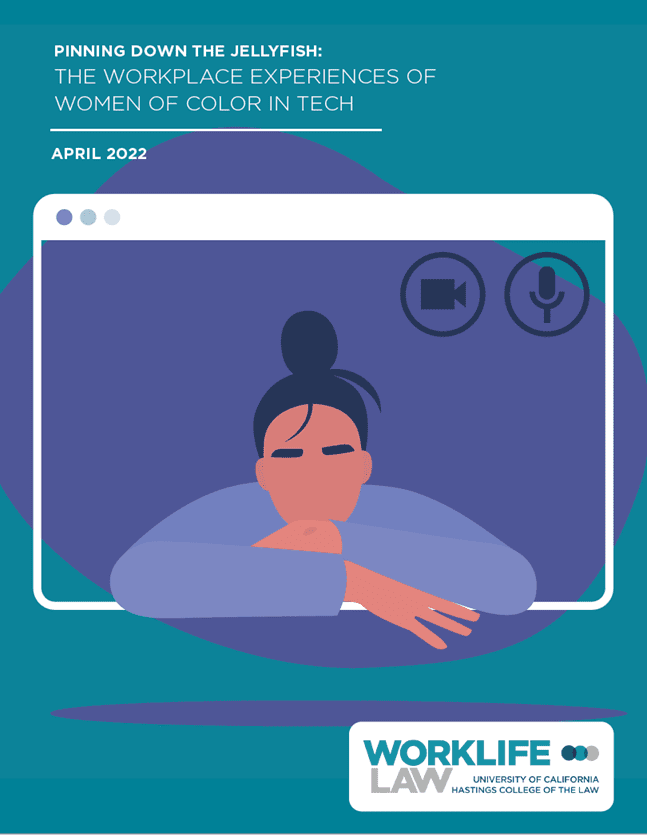UC Law SF Center for WorkLife Law Explores the Experiences of Women of Color in Tech

How are the experiences of women of color in tech different from majority group members?
That was the question the UC Law SF Center for WorkLife Law set out to answer, as part of the Women of Color in Computing Collaborative, supported by the Kapor Center and the Center for Gender Equity in Science and Technology at Arizona State University.
In a study released in April, the Center found a pattern that women of color in tech are often asked to do work for which they are not paid, including office chores such as taking notes or planning staff parties. This study “Pinning Down the Jellyfish: The Workplace Experience of Women of Color in Tech” sought to find out why over half of mid-career women leave jobs in tech, why early-career women leave at twice the rate of men, and why women of color are still underrepresented, especially in leadership roles.
One African American woman in the study explained a difficult dynamic: “I am acting as a product manager currently… And I’m also a diversity and inclusion program manager as well… I don’t get paid for my diversity and inclusion role, but it is a full-time role, and it is a program manager role… [I was told], ‘Well, unfortunately we don’t have the budget.’”
“There’s a simple way to make company culture less toxic,” said UC Law SF Prof. Joan W. Williams, one of the authors of the study. “Stop asking women, particularly women of color, to do work for which they aren’t paid, and which ultimately hurts their careers.”
The study drew on data from interviews with women of color in tech, and a quantitative survey of the workplace experiences of 216 tech workers.
Williams, working with center colleagues Dr. Rachel Korn and Asma Ghani, found that women of color in tech were less likely to report being chosen for high-profile tasks or teams than white women. Other women of color reported being asked to take on dual company roles without additional compensation or being told to “pitch in” on office chores, such as filling napkin dispensers.
“Women of color end up leaving tech companies – and even the industry – because they feel overworked, underutilized and undervalued,” said Williams.
One Latina interviewed for the study said, “[I]t got down to the point where I went to HR, and I was just like, ‘Listen, this is what it is. This is all of the nonsense I’ve been dealing for the past year. I’m fully vested now. I want out. I want a severance package. I want to get out of this place.’”
The center found that women of color’s experiences in tech were characterized by bias – which means they face a more difficult path to the top. The bottom line? Organizations that want to retain their women of color and improve diversity at all levels need to implement structural changes that remove these barriers.
The report, available on the center’s website, provides a roadmap for tech companies to follow: it lays out the key barriers women of color are facing in the industry, and provides concrete strategies that organizations of any size can begin implementing today to help level the playing field for all employees.